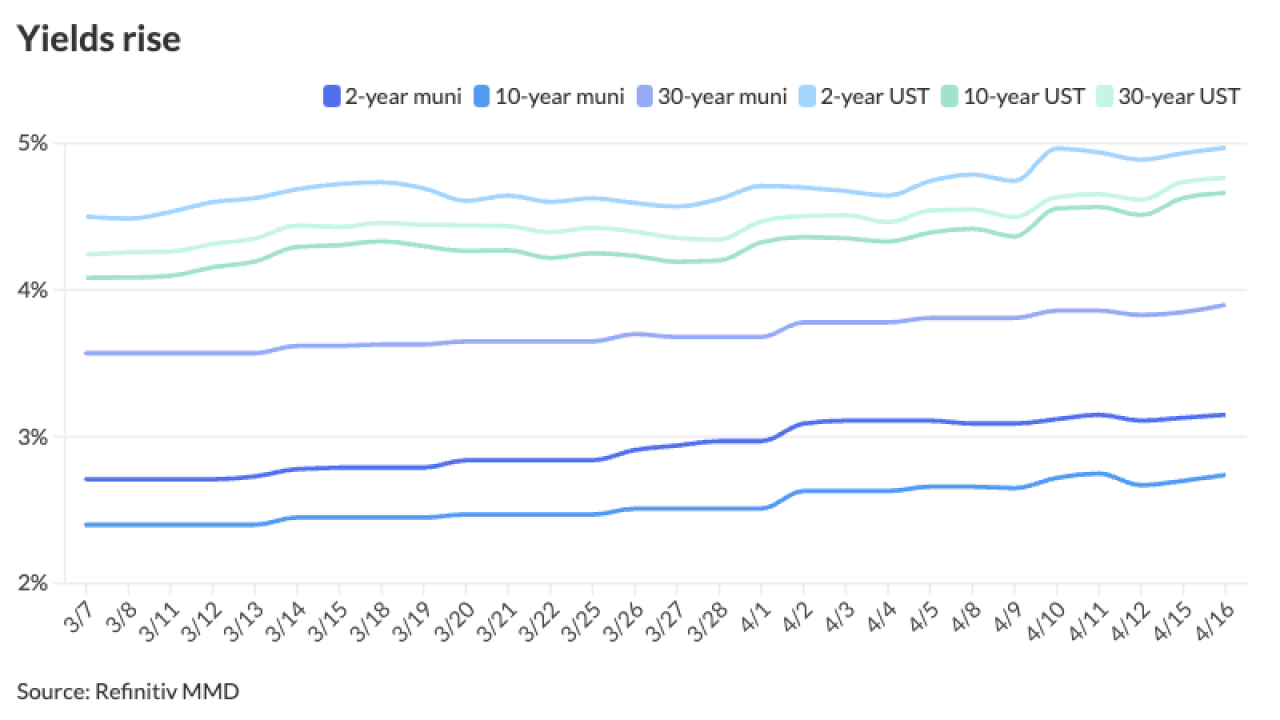Ambac Financial Group Inc. left investors hanging yesterday.
In its report for the third quarter, the New York-based bond insurer left out the one truly important number investors were looking for amid the mishmash of derivatives valuation methods and accounting minutiae — statutory capital.
Statutory capital is potentially the number that determines whether Ambac lives or dies.
The Wisconsin Office of the Commissioner of Insurance requires Ambac to maintain at least $2 million in statutory capital — defined as assets in excess of liabilities, subject to certain statutory adjustments.
If Ambac’s statutory capital falls below that threshold, it is subject to regulatory seizure, frozen claims-paying, and other unceremonious fates for bond insurers.
In the section of the report where Ambac normally spells out its statutory capital, Ambac said the numbers were “not yet available.”
“The reason why we didn’t provide statutory numbers is that it’s simply not done yet,” chief financial officer Sean T. Leonard said on a conference call.
The company said it will file its statements with regulators on Nov. 16.
“The only thing that a sophisticated investor should care about at this point is the statutory capital levels,” said Rob Haines, an analyst with CreditSights. “Nothing that happened this quarter really matters until we can see the statutory capital numbers and make an assessment on that.”
Ambac’s liabilities exceeded its assets at the end of the third quarter by about $2.17 billion, well short of the minimum.
Regulators, though, have been reluctant to disrupt operations at bond insurers and have allowed considerable leeway. In the second quarter, regulators allowed Ambac to count as an asset $1.8 billion reserved to pay claims, boosting its capital and meeting the minimum.
In late September, Haines observed Ambac was “spiraling rapidly” toward the minimum. Over the summer he predicted the company would run out of money by 2013. Yesterday, Haines said he saw nothing to change his belief that the company is burning through its capital.
Ambac insures $411.8 billion of debt, including $229.8 billion of municipal bonds.
With its credit rated junk by Moody’s Investors Service and Standard & Poor’s, Ambac is not writing new business.
It is trying to shield itself from the bad credit on its books by paying bondholders to strip insurance from their bonds, among other techniques.
Ambac posted a profit of $2.19 billion for the third quarter. That sum was the result of the usual mess of accounting and legal issues. Most of the profit stemmed from the accounting quirk that rewards bond insurers with profit when their credit quality deteriorates.
The derivatives written by a company are worth less when that company is more likely to default. Because derivatives are a liability, Ambac’s liabilities decline when its derivatives are worth less.
This inelegant equation means that the insurer’s liabilities go down when its own credit erodes.
This is precisely what happened in the second quarter. Ambac’s credit quality implied by the credit-default swaps on its own bonds decayed substantially.
At the end of the second quarter, it cost an investor $3.2 million to protect $10 million in Ambac’s bonds from default, based on CDS quotes from Bloomberg LP. By the end of the third quarter, it cost $5.3 million.
That depressed the value of the derivatives Ambac is responsible for, because it implies a heightened likelihood the company will default.
As far as Ambac’s financial statements are concerned, that means the company enjoys lower liabilities. A reduction in liabilities without a corresponding reduction in assets is profit. That resulted in almost $2.13 billion in income.
Another source of income was the assumption that the company would prevail in disputes with four mortgage lenders and servicers that Ambac alleges stuffed insured bonds with shoddy loans.
Ambac has paid or expects to pay claims on these bonds, and is fighting to be compensated by the lenders and servicers. The company, which originally assumed it would collect $1.1 billion from these disputes, now estimates it will collect $1.9 billion. That increase adds to assets and therefore counts as income.





